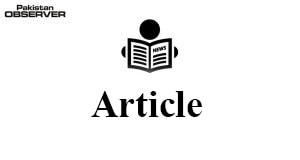Khalil Dogar
SMOKING is the practice of combustion, inhalation of tobacco and other recreational drugs. It is one of the major public health challenges in today’s world and the single most important cause of preventable deaths worldwide. According to the World Health Organization (WHO) the use of tobacco causes 8 million death globally each year and more than 7 million of those deaths are the result of direct tobacco use while around 1.2 million are the result of non-smokers being exposed to second-hand smoking. In the world almost 80% of the smokers, living in low and middle income countries, spend most of their income on tobacco products. The costs of tobacco are high in terms of negative impact on the economy and public health.
There are over 23.9 million tobacco users in Pakistan, out of which approximately 166,000 die every year because of tobacco-related diseases. According to a study conducted by Pakistan Institute of Development Economics (PIDE), smokers in Pakistan spend 10% of their average monthly income on cigarettes, while lower income groups tend to spend more on tobacco products. 25.3% of households in the lowest income group smoke cigarettes compared to 16.2% of households in the highest income group. Since the lower income group already has limited access to healthcare, they tend to face the brunt of the tobacco epidemic.
Studies evidently show how at a micro level lower income groups remain trapped in the health and economic cost of tobacco consumption and the magnitude of this epidemic becomes clearer when we take into account the total health burden of tobacco on the country. Figure from a study conducted by Pakistan Health Research Council (PHRC) in Pakistan, tobacco use cost the economy PKR 192 billion due to health care costs for tobacco-related diseases and lost productivity. In comparison, the revenue generated from tobacco taxation is only PKR. 115 billion according to the Federal Board of Revenue (FBR).
Tobacco taxation is a crucial element of a comprehensive tobacco control strategy. However, to fully realize the benefits, it is important to understand the impact of increased taxes among high-risk subpopulations. The PIDE estimates that 25.3% of Pakistani households in the lowest income group smoke cigarettes compared to 16.2% of households in the highest income group similarly 39% of households are exposed daily to second-hand tobacco smoking. According to the STOP Survey, Pakistan smokers spend 10% of their average monthly income on cigarettes. A substantial number of lower income tobacco users die prematurely from tobacco-related diseases, and many more users and their families are forced to suffer the hardships and pain of tobacco-caused diseases and disabilities. Studies have found that raising cigarette prices through increased taxes is a highly effective measure for reducing smoking among youth, young adults, and people of low socioeconomic status.
Tobacco control measures, such as advertising bans and public smoking prohibitions along with a substantial increase in the taxes and prices of tobacco products is the most cost-effective measure to reduce tobacco use and ensure the effectiveness of tobacco control demand reduction measures. Worldwide, governments levy taxes on tobacco products. Tobacco-product excise taxes are most important for attaining the health objective of reduced tobacco consumption. In South Asia, increasing tobacco prices and taxes turned out to be an effective tool in reducing tobacco use, saving lives and generating revenue. In European Union, a rise of 10% in cigarette price significantly reduced cigarette consumption as well as the total death toll caused by smoking. It was most effective in Bulgaria and Romania, followed by Latvia and Poland. Moreover, an increase in the number of sustainable tobacco control policies at the highest level of achievement helped reduce cigarette consumption. The succeeding increase in tobacco tax revenues would be instrumental in covering expenditure related to tobacco prevention and control programs. Moreover, revenue generated can be used for human development and other fundamentals.
In order to counter these challenges, the government needs to adopt a National Tobacco Control Program that aims towards reduction in tobacco consumption, mitigating its health cost, and also creating a deterrence for youth from initiating tobacco use Government must have clear guidelines on increasing taxation and health levy on a yearly basis according to recommendations of WHO and its implementations must be ensured independent of an interferences from the industry.
—The writer is Programme Manager, Society for the Protection of the Rights of the Child, SPARC, Islamabad.








